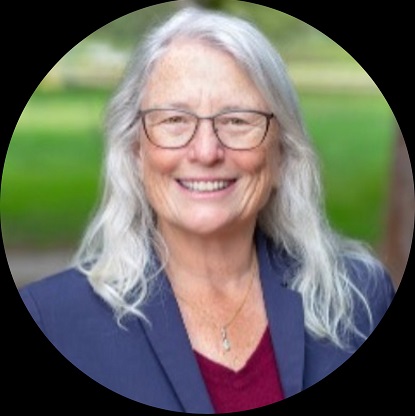SusTech Talk June 2025 – Why We All Need “Bright Ice”
Why We All Need “Bright Ice”: Bright Ice Initiative’s innovative, local and collaborative approach to reducing climate risk
with Dr. Leslie Field, Bright Ice Initiative
Date/Time: Tuesday, June 17, 6-7 pm Pacific Time
This talk will describe the work of Bright Ice Initiative (http://www.brighticeinitiative.org) and its focus on increasing the reflectivity of ice to slow the disastrous impact of glacial melting. Bright Ice Initiative works in regions of critical need to codevelop and evaluate solutions with and for communities living under the greatest threat. By preserving and restoring reflectivity to vital glacial regions, the pace of temperature rise can be reduced, potentially lessening sea level rise while protecting ecosystems and species from catastrophic loss.
Date and Time
Location
Hosts
Registration
- Date: 18 Jun 2025
- Time: 01:00 AM UTC to 02:00 AM UTC
-
 Add Event to Calendar
Add Event to Calendar
Speakers
Leslie Field of Bright Ice Initiative
Why We All Need “Bright Ice”: Bright Ice Initiative’s innovative approach to reducing climate risk
This talk will describe the work of Bright Ice Initiative (http://www.brighticeinitiative.org) and its focus on increasing the reflectivity of ice to slow the disastrous impact of glacial melting. Bright Ice Initiative works in regions of critical need to codevelop and evaluate solutions with and for communities living under the greatest threat. By preserving and restoring reflectivity to vital glacial regions, the pace of temperature rise can be reduced, potentially lessening sea level rise while protecting ecosystems and species from catastrophic loss.
In Minnesota, Bright Ice Initiative tried out Hollow Glass Microspheres (HGMs) to brighten the surface of dirty ice and melt water, increasing the albedo, and found that these tiny, bright bubbles – made from abundant sand-based materials and used worldwide in many everyday commercial applications – work very well to reduce melting when used in thin layers over flat areas. But since glaciers are sloped—and Hollow Glass Microspheres (HGMs) are round— a material that doesn’t roll is needed. Bright Ice Initiative initially carried out tests of a safe, clay-based material for brightening ice that stays in place on Langjökull Glacier in Iceland, measuring ice and snow thickness, temperature, and albedo (reflectivity) throughout the melt season. The results showed that this approach was safe and effective—even on a melting sloped glacier.
This past year, Bright Ice Initiative worked with a “team of teams” spanning two countries to preserve the bright glacial ice of the Himalayas. The alliance included:
- Bright Ice Initiative
- a distinguished glaciologist and his team from the Indian Institute of Technology (IIT)
- an Indigenous environmental expert from the Himalayas
- the Healthy Climate Initiative (which bridges expertise from the US and India)
- Ice Conservation Engineers from the US.
Guided by the Indian Ministry’s regulations, they conducted research fieldwork to test an environmentally-friendly approach to slowing ice melt using this clay-based material that stays in place, with promising results.
Biography:

Her work’s main focus in recent years is on solving urgent challenges in climate. She started and ran the non-profit Ice911 Research/Arctic Ice Project for 16 years, and has taught a seminar class on Engineering and Climate Change at Stanford University for over a decade. Last year she founded a nonprofit, Bright Ice Initiative, to address climate change.
She is also an inventor with over 60 patents and has spoken at venues worldwide including the United Nations, International Maritime Organization, a World Economic Forum-affiliated event in Davos, an exhibit at COP26, and talks and sessions at the Arctic Circle Assembly and Cryosphere 2022 in Reykjavik.
Address:Portola Valley, California, United States, 94028
Agenda
6:00 pm Introduction of speaker
7:00 pm end
